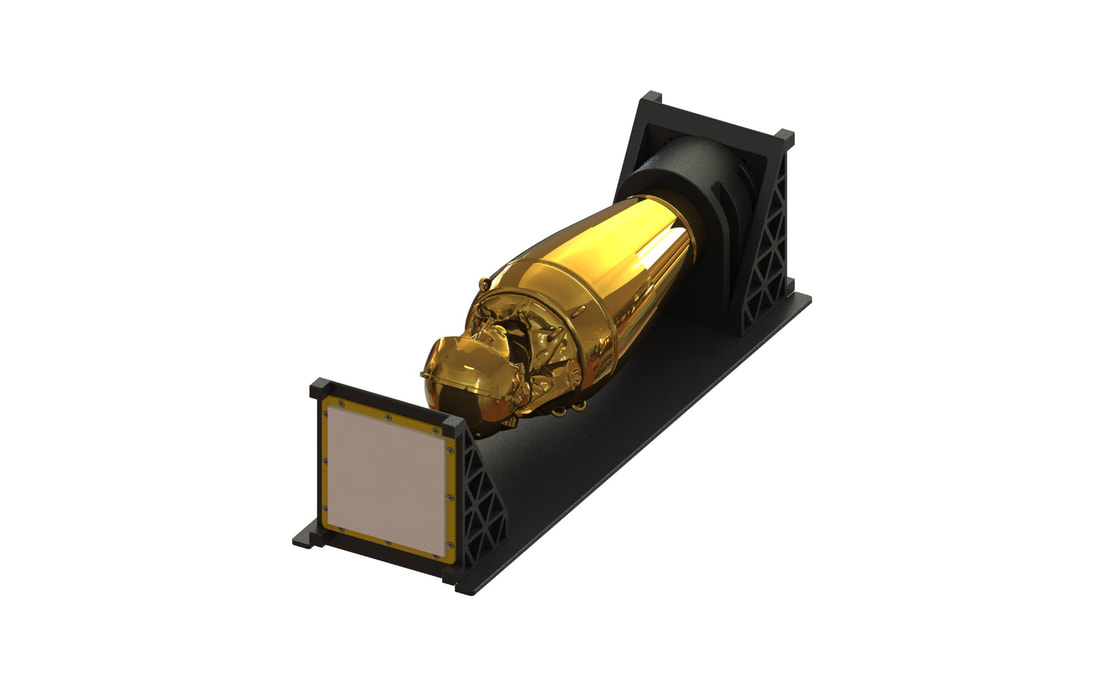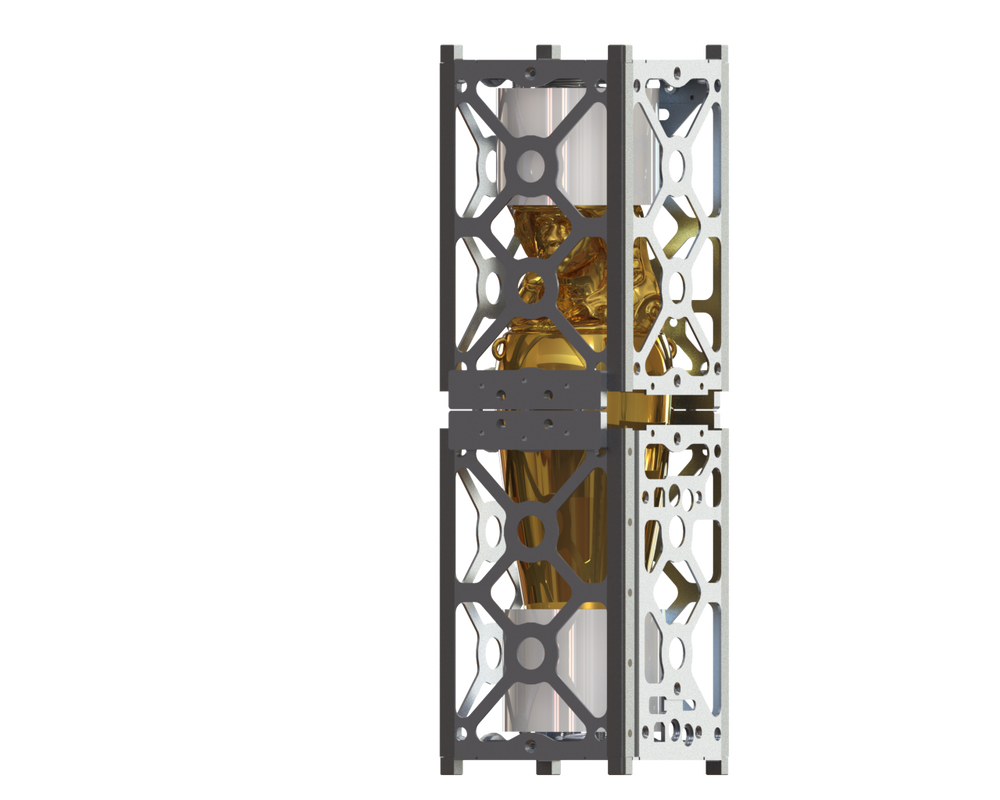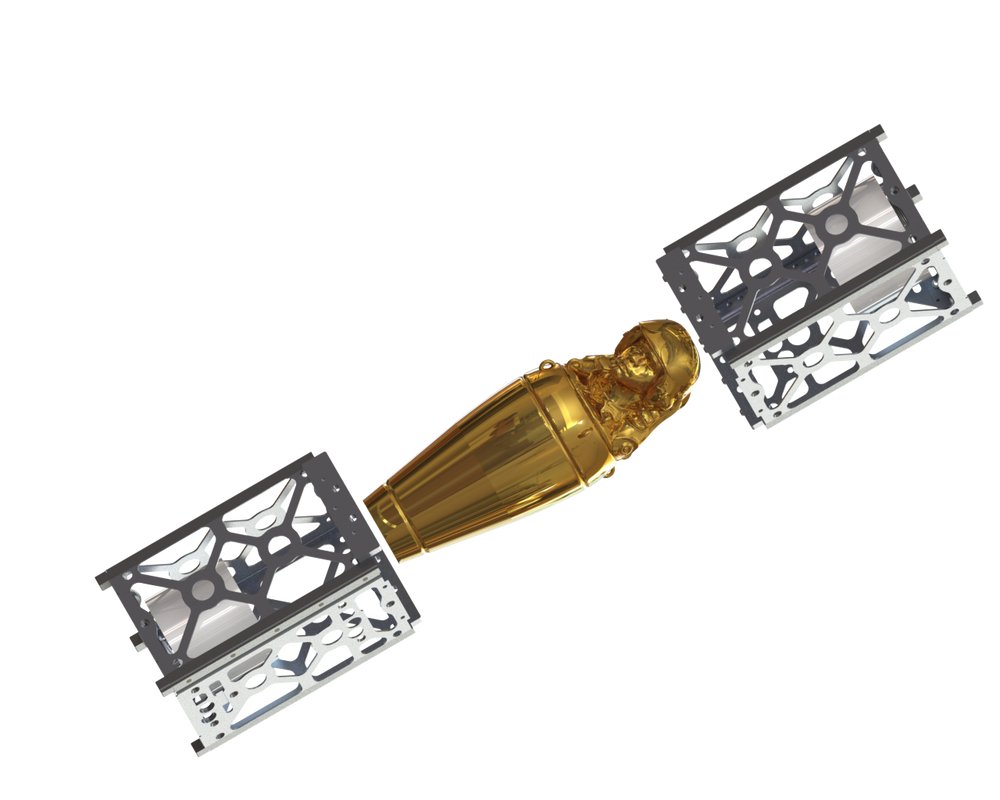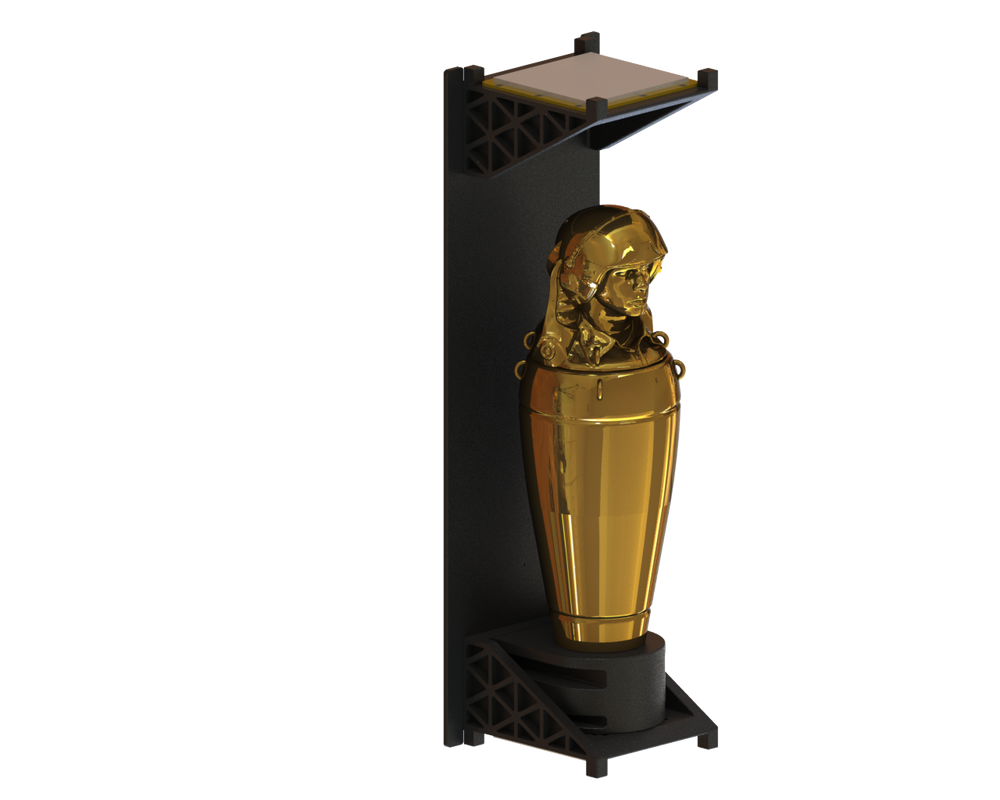|
In July 2015, Pumpkin was approached by the Los Angeles County Museum of Art (LACMA) to work with Bahamian artist Tavares Strachan to create a 3U CubeSat-size work of art to be launched into space. Influenced by a visit to the Neues Museum in Berlin, the result of this very successful working relationship between Pumpkin and the artist is a distinctive, unique and beautiful objet d'art, that happens to also carry some hi-tech tags that will simplify its tracking while on orbit. On Friday, November 2, 2018, the FAA "made a favorable payload determination for the ENOCH payload," and ENOCH is now cleared for launch on the Falcon 9 flight from Vandenberg AFB on November 19. You can read more about ENOCH and the artist behind it here, here and here. As part of the development of ENOCH, Pumpkin initially considered a scheme whereby ENOCH's canopic jar would be located inside two 1.5U CubeSat "shells" that would separate after launch. However, we ultimately felt that this was not a particularly elegant solution, and given the mass of the jar (it's made of cast brass), surviving shake and shock during the launch to properly separate thereafter would likely prove problematic and frankly, too much trouble. That's when AEK visited the Neues Museum in Berlin and saw Nefertiti's bust in its new home. Our new approach was to present the canopic jar in a manner that focused the viewer's eyes on the jar, and not on the surrounding materials required for launch. With this new direction for ENOCH, we created a "sled" that is compatible with Planetary System Corporations Canisterized Satellite Dispenser (CSD). This resulted in a design that exposed the canopic jar as much as possible, and let the sled "fade into the background." Hence the deep black color to the sled. This layout meant that the canopic jar was heavily cantilevered at one end, which led to a few iterations when a lower-than-acceptable fundamental frequency was discovered during environmental tests. The base below the canopic jar also incorporates (hidden from view) the requisite hardware to vent the interior volume of the jar, as well as permanent magnets and hysteresis material to help ENOCH establish a stabilized attitude while on orbit. The sled has "feet" on the top and bottom, with an isogridded structure for strength and lightness, for symmetry and in order to satisfy the CSD requirements. Lastly, since LACMA is not your typical satellite operator, we felt that adding a means to track ENOCH's orbit would be very useful, and so with LACMA's blessing we added three radar retroreflectors supplied by the US Navy to the structure (the white squares). With these radar tags, it will be relatively straightforward to track this "passive" nanosatellite.
We wish the ENOCH mission all the best. A fitting tribute to fallen astronaut Robert Henry Lawrence Jr. Comments are closed.
|
Archives
March 2024
Categories |
Home |
About Us |
Store |
Salvo RTOS |
Contact
|
Copyright © 2015-2022





 RSS Feed
RSS Feed